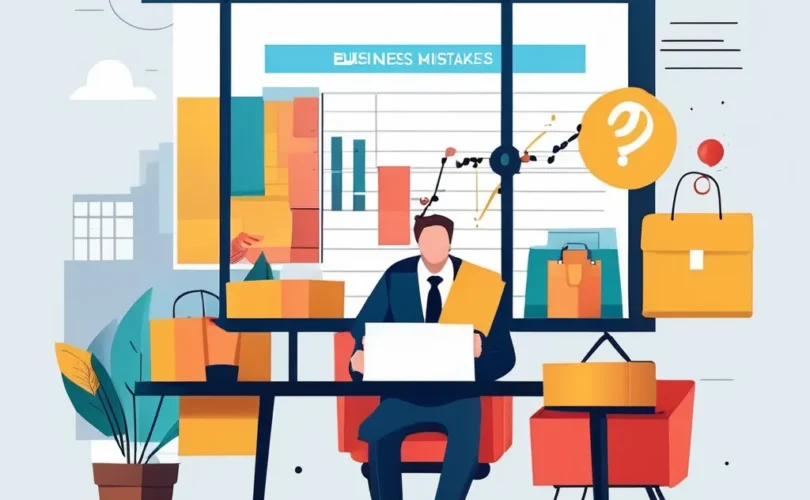Business Plan Pitfalls: Don’t Let Your Great Idea Become a Flop!
So, you’ve got a fantastic business idea – a product or service that’s going to revolutionize the market (or at least your local neighborhood). That’s awesome! But before you jump in headfirst, there’s one crucial step: crafting a solid business plan.
Think of your business plan as a roadmap to success. It outlines your goals, strategies, and financial projections, giving you a clear direction and helping you convince potential investors or lenders to jump on board. However, creating a business plan can be tricky. There are pitfalls to avoid, or your brilliant idea might get lost in a maze of missing information or unrealistic expectations.
In this article, we’ll unveil some common mistakes to steer clear of when crafting your business plan, ensuring your roadmap leads to a thriving business, not a dead end.
Table of Contents
- Unveiling Business Plan Blunders
- The Impact of Planning Pitfalls
- Must-Have Elements for Your Business Plan
- Tips & Tricks for a Stellar Plan
- Conclusion: Chart Your Course to Success!
Unveiling Business Plan Blunders
Let’s explore some common mistakes that can derail your business plan:
- Winging It: This might be your most tempting option, but it’s a recipe for disaster. A well-researched and thoughtfully crafted plan is essential for securing funding and keeping your business on track.
- Financial Fog: Skipping the financial projections or presenting unrealistic numbers is a major turn-off for investors. They need to see a clear picture of your financial health and potential for growth.
- Ignoring Your Competition: Who are your competitors? What are their strengths and weaknesses? A solid business plan acknowledges the competitive landscape and outlines how your business will stand out.
- Features Over Benefits: Don’t get bogged down listing every feature of your product or service. Focus on the benefits – how will it solve your customer’s problems and improve their lives?
- The One-Size-Fits-All Trap: Tailor your business plan to your audience. Are you pitching to investors, seeking a bank loan, or attracting potential partners? Craft your message accordingly.
But wait, there’s more! The question mark in the title hints at one mistake we WON’T be including. Can you guess what it is?
The Impact of Planning Pitfalls
So, what happens if you fall into these planning pitfalls? Here are some potential consequences:
- Difficulty Securing Funding: Investors and lenders rely on a strong business plan to assess the viability of your venture. A weak plan can mean a closed door to much-needed funding.
- Operational Hiccups: Without a clear roadmap, you might encounter unexpected challenges or make strategic missteps. A well-defined plan helps you anticipate and navigate potential roadblocks.
- Wasted Time & Resources: Going in without a plan can lead to wasted time and resources as you course-correct and scramble to address unforeseen issues.
Must-Have Elements for Your Business Plan
Now that you know what to avoid, let’s explore some key elements your business plan should include:
- Executive Summary: This is a concise overview of your entire plan, capturing the essence of your business and grabbing the reader’s attention.
- Company Description: Outline your business concept, mission statement, and the products or services you offer.
- Market Analysis: Identify your target market, analyze your competition, and explain how your business will address a gap in the market.
- Marketing & Sales Strategy: Detail your marketing and sales plan, outlining how you’ll reach your target audience and convert them into customers.
- Financial Projections: Present realistic financial forecasts, including revenue projections, expenses, and potential profitability.
- Management Team: Introduce your team members, highlighting their skills and experience relevant to your business.
So, what was the mistake we DIDN’T include? The answer is excluding a clear call to action. Your business plan should tell your reader what you want them to do next, whether it’s investing, partnering, or simply learning more about your company.
Tips & Tricks for a Stellar Plan
Here are some additional tips to craft a winning business plan:
- Keep it Concise & Clear: Avoid lengthy and jargon-filled documents. Focus on presenting your information in a clear, easy-to-understand manner.
- Visual Appeal: Use charts, graphs, and visuals to break up text and make your plan more engaging.
- Seek Feedback: Get feedback on your plan from trusted advisors or mentors BY Write for us Or Contact Us..
FAQ’S
Q: How long should my business plan be?
A: There’s no one-size-fits-all answer. Aim for a concise document, typically around 15-20 pages, that effectively conveys all the essential information.
Q: Are there any templates or resources available to help me write a business plan?
A: Absolutely! Many resources are available online and through government agencies to help you craft a business plan. The U.S. Small Business Administration (SBA) https://www.sba.gov/ offers a free business plan template and guide you can download.
Q: Do I need to include a lot of financial jargon in my business plan?
A: While understanding financial concepts is important, avoid overwhelming your readers with technical jargon. Present your financial projections in a clear and easy-to-understand format, using visuals where appropriate.
Q: What if my business idea is still evolving, should I wait to write a plan?
A: Not necessarily! A business plan is a living document that can be adapted as your business grows and your idea takes shape. Start with a basic outline and flesh it out as you gather more information and refine your concept.
